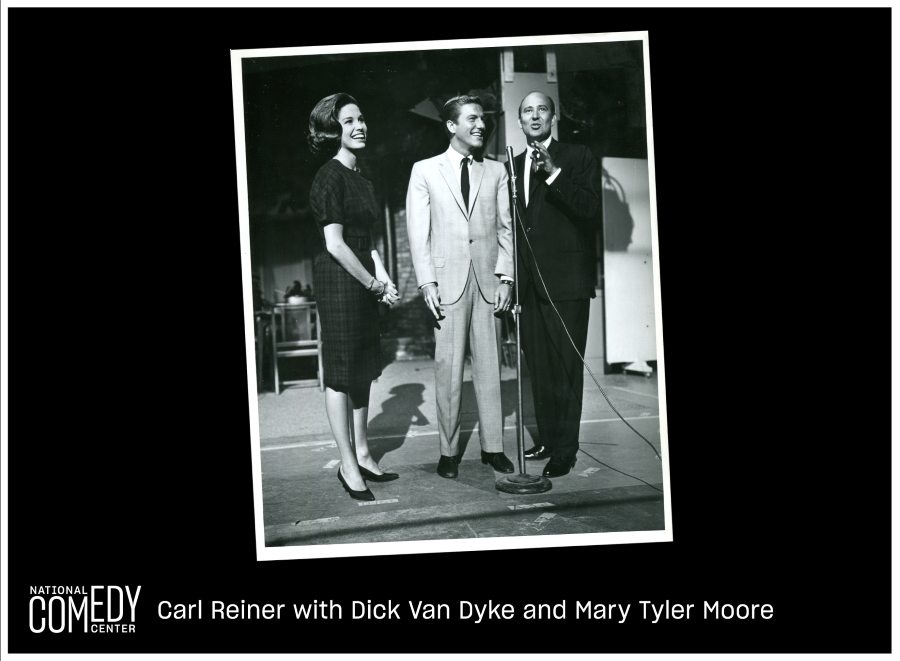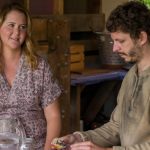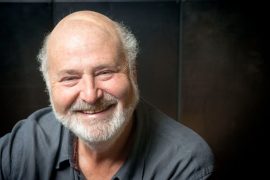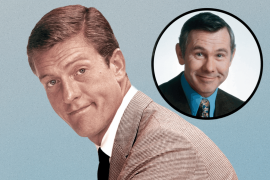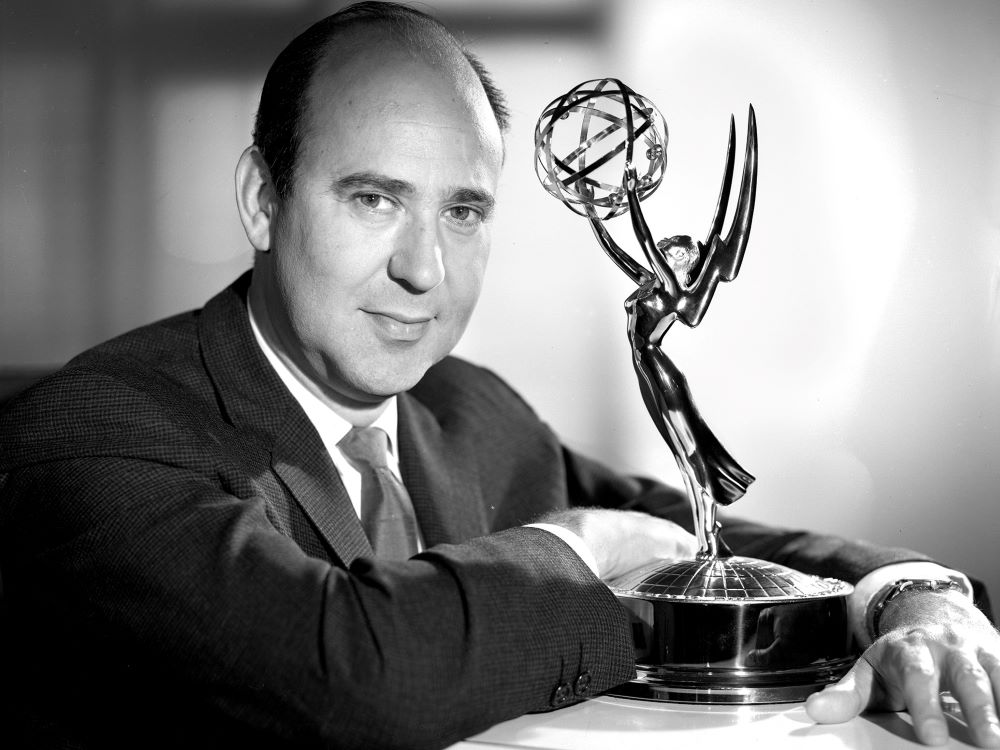
This Sunday, March 20, would have been Carl Reiner’s 100th birthday.
Despite writing a book entitled, “How to Live Forever,” the great writer-producer-comedian double-crossed us by dying nearly two years ago at 98.
To mark the occasion of Reiner’s centennial, the National Comedy Center, located in Jamestown, N.Y., will premiere a new multi-media exhibit in Reiner’s honour. “Carl Reiner: Keep Laughing,” will debut on July 1, 2022. It will feature hundreds of never-before-seen archival materials – including the original script for what would become The Dick Van Dyke Show and the typewriter it was hammered out on. The exhibits span Reiner’s remarkable seven-decade career.
In 2017, I interviewed Reiner for an article that ran in The Toronto Star. CBS had started showing episodes of two of their most celebrated black and white sitcoms — I Love Lucy and The Dick Van Dyke Show — in colour. The computer generated process of “colourizing” old shows has come a long way since the 1980s, when the technique was first tested. The new Van Dykes were carefully art directed and while purists will always cherish the originals, these holiday specials helped turn a new generation on to some classic TV comedy.
My questions, therefore, had a lot to do with turning these black and white shows into colour. For example:
Do you think some episodes of the series call out for colour more than others?
advertisement
We live in colour, so anything that’s on television that’s in colour is natural to us. Black and white is not natural. I’m going to be very happy to see it in colour. I saw it in colour originally.
Is CBS planning to colourize more episodes of The Dick Van Dyke Show?
I’m hoping they colourize all of the episodes. When we first did the show, we said, ‘This show could last forever.’ We assiduously stayed away from slang of the day, politics of the day, and I said at the time, ‘This may live forever if we don’t use slang.’ So I’m very happy it’s going to be in colour, because we’re living in colour.
Do you think your friend Mel Brooks’ film Young Frankenstein would have been as effective in colour as it was in black and white?
I see Mel Brooks every night; he’s in colour in person. He’s hilarious. In black and white I wouldn’t laugh so much. I’d worry, I’d say, where’s his colour? No, his pictures are funny because they’re funny, not because they’re in colour.
Is it true that in 1966, CBS wanted to continue the series another couple of seasons, shooting the new episodes in colour?
Yes, it is, they asked us if we would and we were all going on to do other things. We also felt that we were starting to repeat ourselves, and we said, ‘Let’s go out strong.’ We saw the end of the tunnel, we ran for it, and we had 158 shows; that’s a lot of shows. Today, they do like 12 a year; we did 28, I think, or 30.
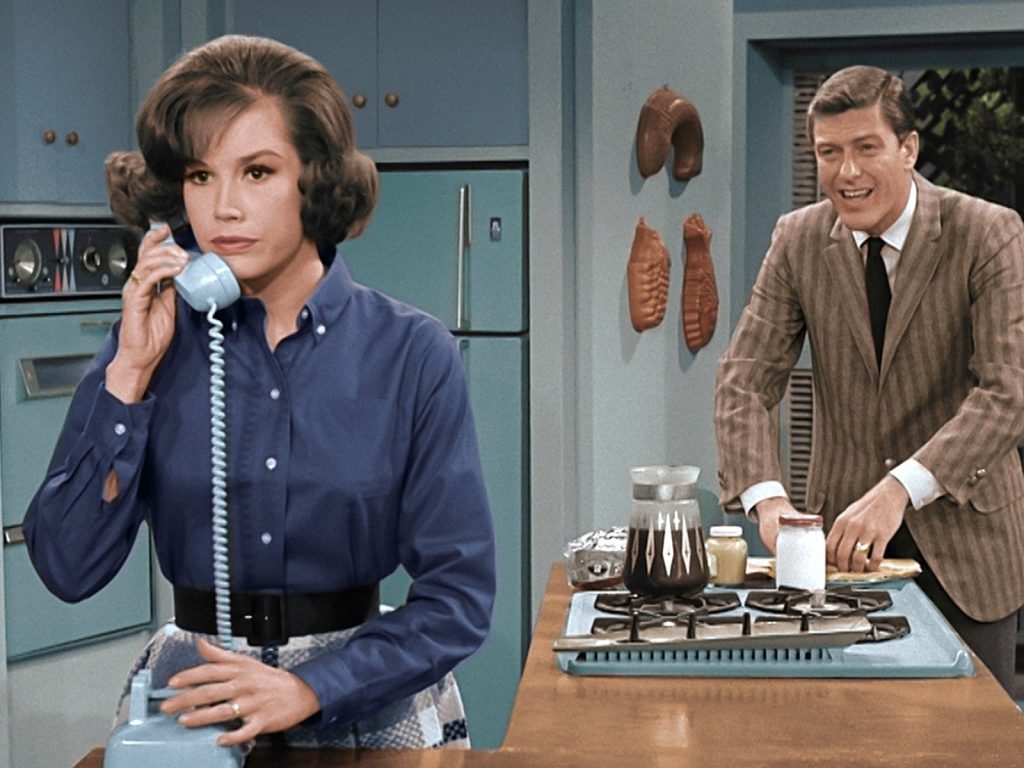
Do you think the 11-year age difference between Moore and Van Dyke would have been more pronounced in colour than in black and white?
No, not at all. As a matter of fact, I saw it in colour and they looked so much better in colour. I know them in colour.
What was it like working with John Candy on Summer Rental?
John Candy was a force of nature; he was one of the sweetest human beings ever. And he knew he wasn’t going to live long, which was very sad, because he wasn’t eating well. When we did Summer Rental together, I put him on the Pritikin Diet and he was eating very well for a while, and then he fell off it, he bought tons of shrimp.
Who is your favourite Canadian?
I would have to say it’s Norman Jewison. He gave me my first part as a leading man and he gave me Eva Marie Saint to play opposite. I thank him to this day for that. And he also has a farm where he grows grain for pancakes and maple syrup trees, and he just sent me my Christmas package, so I thank him for that every year.
